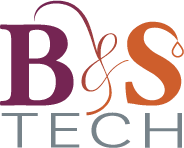Ensuring the organoleptic quality of alcohol-free wine is a key issue to ensure its commercial success.
Indeed, current dealcoholization technologies and know-how have a number of limitations that slow down the emergence of new products.
This is a challenge for the wine industry because consumers, anxious to reduce their alcohol consumption, are beginning to turn away from wine and choose other lighter alcoholic beverages such as beer. It is also a great opportunity for the sector to expand its customer base by being able to offer wine products to non-alcohol consumers.
This is why it seemed necessary to us at B&S TECH to understand more deeply the organoleptic transformation of wine related to dealcoholization in order to be able to characterize the avenues for improvement to be investigated both in terms of the process and the selection of wines.
It is in the context of these reflections that we met Gilles de Revel, professor of oenology at the Institute of Winery and Wine Sciences (ISVV), at the University of Bordeaux and specialist in the composition of wines and spirits, their chemical and sensory analysis.
We therefore decided to organize with him a tasting workshop with a dozen experts to whose palate we submitted a dozen dealcoholized wines by mixing their colors and grape varieties (red, rosé and white) and their terroirs. The wines have been dealcoholized in our B&S TECH laboratory with the principle of vacuum evaporation.
The tasting took place in 3 stages:
1. Discovery of raw dealcoholized wines : allows tasters to get a first idea of the product and to propose the first elements of description with an expert eye
2. Comparison between base wines, their dealcoholized version and their distillate: makes it possible to understand from the base wine, the elements that remained in the dealcoholized wine, those that went into the distillate and those that disappeared.
3. Tasting of non-alcoholic wines marketed: makes it possible to evaluate the organoleptic quality of products available on the market and to identify areas for improvement on these products
The aim was to find a tasting vocabulary to describe unusual sensations in wine and to identify the systemic phenomena of dealcoholization. Thus, the concentration of acidity, the sensation of reduction in the nose and the changes in consistency and aromatic persistence could be noted.
It was also a question of suggesting ways to compensate for the imbalance caused by alcohol extraction.
This first stage of the inventory confirmed the innovation potential linked to this new category of products and made it possible to target the avenues of work for B&S TECH, which is reinforced in its desire to develop the know-how to be made available to winegrowers.
